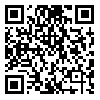BibTeX | RIS | EndNote | Medlars | ProCite | Reference Manager | RefWorks
Send citation to:
URL: http://hakim.tums.ac.ir/article-1-2216-en.html
2- Professor, Department of Health Management, policy and Economics, School of Public Health, Tehran University of Medical Sciences, Tehran, Iran.
3- Professor, Department of Health Management, policy and Economics, School of Public Health, Tehran University of Medical Sciences, Tehran, Iran ,
Introduction: The consumption of unhealthy products is influenced by the advertising. The control of these advertisements requires the participation of a wide range of stakeholders with different roles and objectives. These differences have created many obstacles in effective cooperation between participants. The aim of present study was identifying the challenges of banning the advertising of health-damaging products and providing solutions to facilitate stakeholder participation.
Methods: This study investigated the challenges and solutions of the implementation of banning the advertising of products harmful to health and designed an intersectoral collaboration model with a mixed method in four steps; qualitative, stakeholder analysis, scoping review and Delphi. In Delphi stage 21 experts participated.
Findings: The challenges have been identified in three areas: political, economic and social context; inter-organizational coordination and communication; and management involving planning, leadership, organization and control. Additionally, influential stakeholders were identified. The solutions also identified and categorized including finance, governance and leadership, structure, process and models.
Conclusion: The proposed model provides a comprehensive overview of the dimensions and components of intersectoral collaboration when implementing the law that bans advertisements of unhealthy products. The model’s sub-components are intricately connected to the main components, making it possible to identify existing obstacles and formulate corrective solutions.
Policy Recommendations: It recommends the creation of independent structures to carry out inter-ministerial policies and programs, the development of protective laws and policies, continuous monitoring by a representative of influential organizations, the empowerment of key stakeholders and communities, and the reform of advertising licensing.
Received: 2023/08/28 | Accepted: 2022/12/11 | Published: 2022/12/11
| Rights and permissions | |
 |
This work is licensed under a Creative Commons Attribution-NonCommercial 4.0 International License. |





